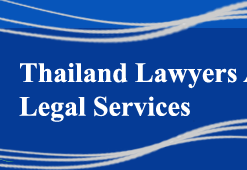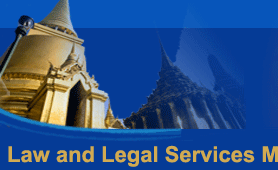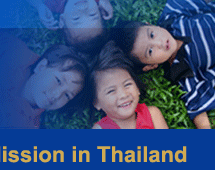



    |
|
| |
|
Open Regionalism and Deeper Integration: The Implementation of ASEAN Investment Area (AIA) and ASEAN Free Trade Area (AFTA)
Part 13
Therefore, non-ASEAN investors can enjoy free mobility intra-ASEAN if they have "ASEAN investor" status under the AIA, by virtue of the NT/MFN treatment under AIA. Moreover, as discussed above, the short-term measures bind ASEAN countries to allow 100% foreign equity holding in a company submitted for approval from 1st January 1999 to 31st December 2000. This even further accelerates the elimination of discrimination against foreign investors and encourages them to invest in ASEAN immediately, within 1999-2000, in order to be entitled to the special privileges and NT/MFN treatment under AIA.
Regarding the implementation of NT with the 10-year differential between ASEAN investor and non-ASEAN investors, in fact, the rationale behind this time frame is not only specified as a grace period for fully implementing AIA, but also to stimulate foreign investors to invest immediately in any ASEAN country. If they do so now, they can be regarded as ASEAN investors and immediately be entitled to the NT/MFN treatment. Once they invest in any ASEAN country they are regarded as juristic persons of an ASEAN country and are able to move freely intra-ASEAN, because ASEAN countries have committed themselves to mutual NT, subject only to the TEL and SL. So non-ASEAN investors, if they invest in an ASEAN country now, need not wait till the year 2010 when NT will extend to all investors.
AIA and Industrial Schemes
In conjunction with the launch of the AIA, other industrial schemes (both revised and new schemes) are to be implemented based on preferential treatment. Prior to the launch of AIA, ASEAN had implemented some other industrial programs such as the Revised Basic Agreement on ASEAN Industrial Joint Ventures of 1987, the Memorandum of Understanding on the Brand-to-Brand Complementation Scheme of 1988, and the ASEAN Industrial Co-operation Scheme (AICO) of 1996. These programs are based on preferential regimes extended among ASEAN members. For instance, the AICO scheme
(94)is to encourage companies located and operating in different ASEAN countries to co-operate with one another in the manufacture of approved AICO products. A minimum of two companies in two different countries is required to form an "AICO arrangement". The major privilege of AICO is that approved AICO products will enjoy preferential tariff rates of 0-5% for all ASEAN countries immediately upon approval of such an AICO arrangement. The immediate application of the 0-5% preferential tariff rate will provide a head start to AICO products compared to non-AICO products, since the general reduction of tariff to the 0-5% range will not occur under the CEPT until 2003. Other incentives include local content accreditation where applicable, and other non-tariff incentives to be provided by the participating member countries. The preferential tariff rates of 0-5% will also be applicable to the importation of intermediate products and/or raw material inputs for the manufacture of AICO Final Products and/or AICO Intermediate Products. The scheme is open to any company that fulfils the criteria: incorporated and operating in any ASEAN country; having a minimum 30% ASEAN national equity(95); and undertaking resource pooling, industrial complementation or industrial co-operation activities.These ASEAN industrial programs implement the regional industrialisation program model as they involve regimes for encouraging intra-regional investment by the setting up of regional enterprises with capital from more than one member country. They encourage cross-border investment by way of regionally integrated enterprises and projects (UNCTAD, 1999: 16-17).
Thus, ASEAN has concertedly liberalised trade and investment intra-ASEAN so that all projects implemented are interactive and responsive to each other
(96). While the intra-ASEAN market has been growing(97)and becoming increasingly liberalised(98), ASEAN has been liberalising investment that will further enhance trade flows from within and from outside the region. With the interactive implementation of AIA, AFTA, AICO, and the short-term measures, foreign investors have been signalled that if they invest in ASEAN now they can be entitled to all privileges granted under such agreements, even NT/MFN treatment and the advance preferential tariff rate of 0-5% under AFTA. Foreign investors responded immediately to the privileges offered by ASEAN. For instance, in January 1999, Siemens AG established a regional trade and investment centre in Thailand and increased its equity in Siemens (Thailand) from 49% to 74.5% of the company's equity(99). Fujitsu also launched its biggest production base of hard disc drives in Thailand in 1999(100). Also US oil giant Caltex relocated its global operational headquarters to Singapore in March 1999(101). The Messer Group made its largest-ever single investment outside Germany, in Singapore(102). 3 COM has opened its company's largest production base in Singapore with a US$ 70 million investment(103)._______________________________________________________________
(94)See explanation of AICO Scheme at the ASEAN website, http:/www.aseand.or.id.
(95)However, this requirement is exempt during the implementation of short-term measures between 1st January 1999 to 31st December 2000 for encouraging foreign investment into the region. Therefore, 100% foreign equity holding in a company established in any ASEAN country is allowed and entitled to the preferences provided.
(96)See Short term Measures in Annex 12, which ASEAN countries allow 100% equity owned by non-ASEAN investor, and under AIA, "ASEAN investors" are entitled to national treatment, and all industries are opened to them (subject only to negative lists) have facilitated liberalised investment, and these measures have also facilitated service trade through commercial presence so that non-ASEAN service providers can establish themselves in ASEAN countries and can freely mobile within the region. See section 3. of the Short Term Measures for individual ASEAN country liberalisation. Also IMF rescued packages include privatisation scheme, open financial sector, telecommunication, and other service sectors of ASEAN countries. Also see Table 6 GATS-Plus Commitments of ASEAN Countries showing ASEAN countries liberalised services extensively. AICO Schemes which reinforce trade and investment liberalisation by providing 0-5% tariff rate to all products produced under AICO Schemes. All these measures function in a way that they are all complementary, and facilitate both trade and investment lberalisation. Moreover, as I pointed out the four main areas that ASEAN countries generally restrict FDI: entry restriction; equity limitation; performance requirement; and investment incentive. Now ASEAN countries have deregulated them, as mentioned above, allow 100% equity holding by foreign investor, open industries that closeed to foreign investor, committed to lift out performance requirement and coordinate among ASEAN members in providing investment incentives.
See ASEAN Secretariat (1998a) Compendium of Investment Policies and Measures in ASEAN Countries. Jakarta: The ASEAN Secretariat. Also see ASEAN Secretariat (1998b) Handbook of Investment Agreements in ASEAN. Jakarta: The ASEAN Secretariat.
(97)ASEAN is now composed of 10 countries and has a total population of about 500 million, a total area of 4.5 million square kilometers, and a combined gross national product of US$ 685 billion.
(98)ASEAN responded to the crisis by pursuing financial and economic reforms and boosting the region's competitive edge through accelerated implementation of its economic liberalization policies and programs, such as the ASEAN Free Trade Area, the ASEAN Investment Area and the ASEAN Industrial Co-operation Scheme (AICO).
(99)The centre would support the activities of Siemens AG joint ventures in the whole region, particularly in the telecommunications, transport, medical systems and power generation sectors. BOI Thailand Announcement, No. 18/2542 (O.10) 27th January 1999.
(100)BOI Thailand announcement, No. 18/2542 (O.10) 27th January 1999.
(101)Singapore Investment News, January 1999.
(102)Messer Griesheim GmbH of Germany and Texaco Nederlands B.V., a subsidiary of Texaco Inc of White Plains, NY, will build a US$ 200 million synthesis gas production facility on Singapore Jurong Island. Singapore Investment News, January 1999.
(103)With the opening of the company's largest production facility in Singapore, 3Com becomes the first global networking company with a manufacturing presence in Asia. Singapore Investment News, January 1999.